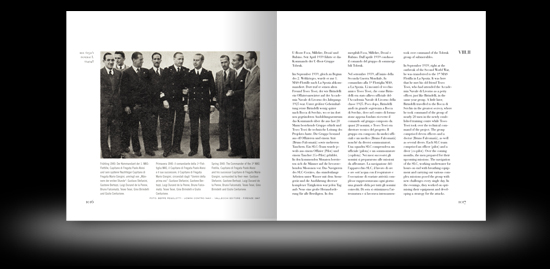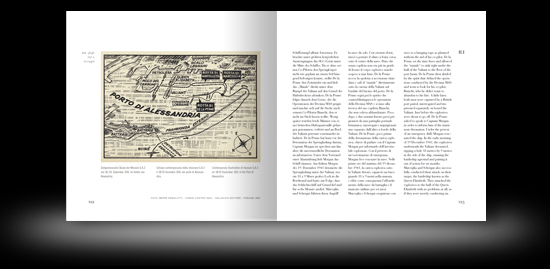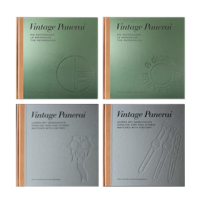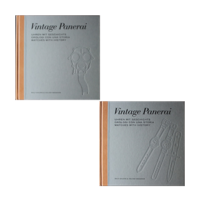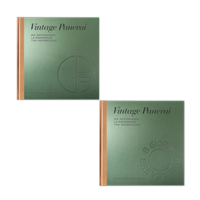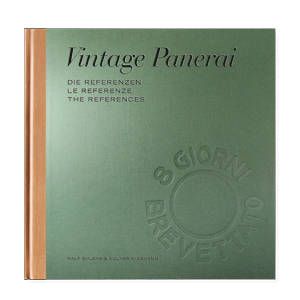Author Archive
“Operazione Stella” – Luigi Ferraro’s Panerai watch
by Volker on Mar.08, 2024, under Allgemein
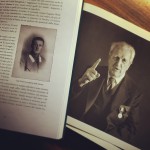 A “Gamma” frogman who wrote history. A photo from 1998 which was a reminder not to miss the chance to capture Luigi Ferraro’s story in our book “The References” – together with the 3646 / Type B watch he was wearing during the “Operazione Stella” in 1943.
A “Gamma” frogman who wrote history. A photo from 1998 which was a reminder not to miss the chance to capture Luigi Ferraro’s story in our book “The References” – together with the 3646 / Type B watch he was wearing during the “Operazione Stella” in 1943.
One of the few watches which can be followed back to the first owner, which is also a very famous one: Luigi Ferraro (M.O.V.M.). Not easy to capture as much as possible of his story in a part in the first volume of “The References”, which filled several books of Italian authors with hundreds of pages. Even in the first Panerai books, written by Giampiero Negretti in 1998, Luigi Ferraro’s famous missions in the mediterranean sea found their place to be mentioned.
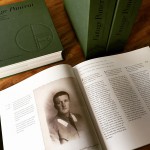 To get in touch with the family of the veteran Luigi Ferraro (1914-2006) was a very intensive and exciting time during the research about his Ref. 3646 / Type B “Radiomir Panerai” with riveted plastic dial (chapter II.II page 190-203). Paolo Ferraro, one of Luigi Ferraro sons, provided excellent photos and made personal documents available for us to be featured in our book, which gave us the chance to illustrate the history behind his father’s watch.
To get in touch with the family of the veteran Luigi Ferraro (1914-2006) was a very intensive and exciting time during the research about his Ref. 3646 / Type B “Radiomir Panerai” with riveted plastic dial (chapter II.II page 190-203). Paolo Ferraro, one of Luigi Ferraro sons, provided excellent photos and made personal documents available for us to be featured in our book, which gave us the chance to illustrate the history behind his father’s watch.
In January 1943 Luigi Ferraro obtained his qualification to carry out underwater missions. Initially posted to North Africa to attack enemy targets in the Port of Tripoli, he had to leave the area and returned to Italy. In May 1943 he was posted to La Spezia, where he received instructions from commander Borghese for a new mission – this time not in North Africa, but in the eastern Mediterranean: the Turkish ports of Alexandretta and Mersina. Luigi Ferraro’s four “Stella” missions, for which he was awarded with the M.O.V.M., are described in chapter II.II (page 204-225).
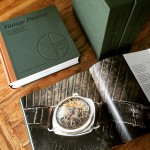 Aside several tools of his time as a “Gamma” frogman, Luigi Ferraro’s 3646 / Type B “Radiomir Panerai” never changed ownership and remained a memorable piece for him and his family since he returned from war. The watch shows intensive proof of aging and is an example of how different these rare watches have aged after more than 70 years. The watch still has its original strap, as well as its original domed plexiglas crystal – intensively aged with countless fissures. Numbers, indices and the typical “Radiomir Panerai” lettering on the riveted plastic dial can still be made out at some points.
Aside several tools of his time as a “Gamma” frogman, Luigi Ferraro’s 3646 / Type B “Radiomir Panerai” never changed ownership and remained a memorable piece for him and his family since he returned from war. The watch shows intensive proof of aging and is an example of how different these rare watches have aged after more than 70 years. The watch still has its original strap, as well as its original domed plexiglas crystal – intensively aged with countless fissures. Numbers, indices and the typical “Radiomir Panerai” lettering on the riveted plastic dial can still be made out at some points.
Luigi Ferraro’s watch has been recorded in our database in 2014, however the watch was known to us already years before. The Rolex 618 / Type 1 movement in combination with the small Oyster Watch Co hallmark, embossed on the inner caseback together with the reference and case number, is matching our criteria for being a watch of the Reference 3646 / Type B. The outer caseback bears a rare matriculation number, of which only a very few 3646 watches are known today. We have published further information about the different matriculation numbers on some of these watches in chapter II.III (page 301-303).
Luigi Ferraro’s 3646 / Type B “Radiomir Panerai” with riveted plastic dial is published extensively in chapter II.II (page 190-203) of the book “The References” 1930’s-1940’s.
More 3646 watches with an interesting history, related to their first owners and the missions they carried out during the Second World War, are introduced in chapter II.I (Ernesto Notari) and in chapter II.III (Licio Visintini). Enjoy reading!
How to visualize a frogman’s pencil written diary from 1945?
by Volker on Feb.16, 2024, under General
During the research on the history behind a Ref. 3646 / Type D “Kampfschwimmer” with engraved caseback, we were able to study the diary of the first owner of the watch. This diary survived the last days of the Second World War and the veteran kept it for decades, willed to share it with us and partially featured in chapter II of our book “History2”.
Thanks to the many detailed descriptions (e.g. the water temperature, current, weather conditions and explosive charges carried) which the frogman wrote down and the examination of historical maps of the 1940’s it was possible to analyze his diary entries precisely and visualize his memories to the readers of our book in an impressive way. The collected documents and additional information let this chapter become one of the unique stories behind a Ref. 3646 / Type D “Kampfschwimmer” watch.
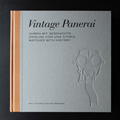 Reading page 83 of “History1” reminds on a part of our research which did happened not often. The frogman wrote the following lines in his diary at the beginning of March 1945:
Reading page 83 of “History1” reminds on a part of our research which did happened not often. The frogman wrote the following lines in his diary at the beginning of March 1945:
“The next morning we set off towards the east in a truck. With unbelievable power, the Russians have pushed thru as far as the [river] Oder in their last offensive. They even managed to build two bridgeheads at Fürstenberg [in November 1961 the city was renamed Eisenhüttenstadt]. Reconnaissance flights tell us that they are putting tremendous amounts of people and material into these bridgeheads”.
Reconnaissance flights? Having this information in mind, we started to search various archives for still existing aerial photographs – maybe the one which the frogmen mentioned in his diary still exists? After the war, some remaining photos were transferred to archives which stored these photos for bomb clearance works. Good luck on the hunt! Guess how easy this search would be? Where to start? To find a aerial photo from the same date, same area and even showing the target, not knowing if its existing at all? We found it – a needle in a haystack – the photo which was shown to the frogmen as their next target.
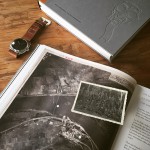 Dated to 1 March 1945, the photo taken by a reconnaissance flight shows one of the pontoon bridges built across the Oder by the Russian troops just shortly before – which became soon later the target for the “Keller Group” just as the frogman wrote it down in his diary. Read more on the diary and various historic documents which helped us to visualize this source of information during our research on a Ref. 3646 / Type D “Kampfschwimmer” watch here.
Dated to 1 March 1945, the photo taken by a reconnaissance flight shows one of the pontoon bridges built across the Oder by the Russian troops just shortly before – which became soon later the target for the “Keller Group” just as the frogman wrote it down in his diary. Read more on the diary and various historic documents which helped us to visualize this source of information during our research on a Ref. 3646 / Type D “Kampfschwimmer” watch here.
The coffee table shot shows page 110-111, chapter II of “History2” next to one of the few original photos of the “Keller Group” taken shortly before their missions at the eastern front (spot some Panerai gear in it). This photo is published on page 94 in the same chapter. The coffee table shot includes also a Ref. 3646 / Type D “Kampfschwimmer”, featured in chapter V of “History2” – the watch of frogman Siegfried Köneke, who was also a member of the “Keller Group”. Read more about this chapter here.
Our two “History” books can be ordered only in our bookstore.
Enjoy reading stories behind these watches!
[Ralf Ehlers & Volker Wiegmann]
The Radiomir which returned from Gibraltar to Italy…
by Volker on Feb.01, 2024, under Allgemein
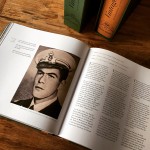 …but alone – without the SLC pilot who used it on his wrist during the mission B.G.5 in December 1942: Licio Visintini.
…but alone – without the SLC pilot who used it on his wrist during the mission B.G.5 in December 1942: Licio Visintini.
Born 1915 and enterred the Royal Italian Navy in 1933, Licio Visintini took part in several missions against the allied fleet in Gibraltar as a member of the Decima MAS. In 1941 Visintini was promoted to Tenente di Vascello. After surviving from SLC missions B.G.3 (May 1941) and B.G.4 (September 1941), carried out by the transport submersible “Scirè” under the command of Junio Valerio Borghese, Visintini returned to Gibraltar undercover in June 1942 where he built the core of the “Orsa Maggiore” on board the tanker Olterra – the hidden base for the SLC units in the bay of Gibraltar.
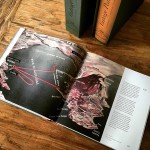 According to legend, Visintini’s „Radiomir Panerai“ was returned to his mother after the end of the Second World War by his former enemy, Lieutenant „Buster“ Crabb (head of the Underwater Working Party in Gibraltar). The return of personal items to relatives showed a great respect that the combatants on different sides had for one another. Crabb, who was himself an experienced diver serving the British Navy, knew from experience all too wellt he level of courage and determination that was neccessary to carry out missions of this kind. Before Visintini’s mother died, she gave the watch to Vittorio Stradi, her son’s best friend. Vittorio Stradi was a „Gamma“ frogman in the Second World War. Fourty years later he passed the watch to his friend Isidoro Mario Nardin, who was also a member of the „Gamma“ frogmen during the Second World War.
According to legend, Visintini’s „Radiomir Panerai“ was returned to his mother after the end of the Second World War by his former enemy, Lieutenant „Buster“ Crabb (head of the Underwater Working Party in Gibraltar). The return of personal items to relatives showed a great respect that the combatants on different sides had for one another. Crabb, who was himself an experienced diver serving the British Navy, knew from experience all too wellt he level of courage and determination that was neccessary to carry out missions of this kind. Before Visintini’s mother died, she gave the watch to Vittorio Stradi, her son’s best friend. Vittorio Stradi was a „Gamma“ frogman in the Second World War. Fourty years later he passed the watch to his friend Isidoro Mario Nardin, who was also a member of the „Gamma“ frogmen during the Second World War.
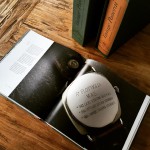 To commemorate the order of ownership, the three names were inscribed for posterity on the caseback, as shown on page 358-359 and 360. For Isidoro Mario Nardin, Licio Visintini’s Panerai watch became a symbol of cameraderie and a memento of his fallen comrade.
To commemorate the order of ownership, the three names were inscribed for posterity on the caseback, as shown on page 358-359 and 360. For Isidoro Mario Nardin, Licio Visintini’s Panerai watch became a symbol of cameraderie and a memento of his fallen comrade.
Chapter II.III in our book “The References” (first volume / 1930’s-1940’s) features the story behind this Ref. 3646 / Type C „Radiomir Panerai“ and its three owners, Licio Visintini (M.O.V.M.), Vittorio Stradi and Isidoro Mario Nardin, on page 350-397.
Information on “The References” 1930’s-1940’s (first volume) can be found here.
Enjoy reading!
[Ralf Ehlers & Volker Wiegmann]
Our database – an interim status on 1 January 2024
by Volker on Jan.16, 2024, under Allgemein
What happened after 1 January 2016 when we “paused” counting new entries in our database for a moment to complete our book set “The References”? We continued to count and still do that – since 2003 (…21 years ago). January 2024 was a good time to pause again and see how our records have changed in numbers of known watches in our database. The total number of all historic Panerai watches in our database from the 1930’s to the 1960’s has grown to 452 known watches.
Back in 2016 we had 211 entries of the Reference 3646 in our database (seven different number groups, from 3646 / Type A to 3646 / Type G). Since then, 55 watches of the References 3646 have been added into our records, making a total of 266 watches of the reference 3646 today. Find an interim status on 1 January 2024 below:
Reference 2533: 3 examples known (2016: 3)
Reference 3646 / Type A: 18 classified (2016: 18)
Reference 3646 / Type B: 21 classified (2016: 16)
Reference 3646 / Type C: 66 classified (2016: 52)
Reference 3646 / Type D: 108 classified (2016: 79)
Reference 3646 / Type E: 32 classified (2016: 26)
Reference 3646 / Type F: 11 classified (2016: 11)
Reference 3646 / Type G: 10 classified (2016: 9)
Mare Nostrum Chronograph: 1 example known (2016: 1)
The watches made by Guido Panerai & Figlio after the Second World War, those with solid lugs, references 6152, 6154, 6152/1 and GPF 2/56 as well as the transitional references and those with Angelus movements increased from 162 to 182. Most additions are watches of the reference 6152/1 – all four versions (Rolex and Angelus movements, Rolex crown and Panerai crown guard) increased from 103 (2016) to 118 specimen classified in our database on 1 January 2024.
Reference 6152 / Type A: 7 classified (2016: 7)
Reference 6152 / Type B: 2 classified (2016: 2)
Reference 6154: 18 classified (2016: 15)
Reference 6152/1 Rolex with Rolex crown: 24 classified (2016: 23)
Reference 6152/1 Rolex with Panerai crown guard: 74 classified (2016: 64)
GPF 2/56 Angelus: 27 classified (2016: 25)
Reference 3646 Angelus: 5 classified (2016: 5)
Reference 3646 Transitional: 5 classified (2016: 5)
Reference 6152/1 Angelus with Rolex crown: 8 classified (2016: 6)
Reference 6152/1 Angelus with Panerai crown guard: 12 classified (2016: 10)
At this point, again, we want to thank those who shared information on the watches lined up above with us. Auctioneers, collectors, veterans or their family members and friends.
Ralf Ehlers & Volker Wiegmann
Naval heritage – Luigi Durand de la Penne
by Volker on Dec.25, 2023, under Allgemein
 Luigi Durand de la Penne was one of the famous SLC pilots of the Mezzi d’Assalto who wrote naval history in the Second World War. Luigi Durand de la Penne was born in Genoa, where he also died (11 February 1914 – 17 January 1992). He graduated from the Naval Academy in Livorno in 1934. He was one of the first crewmen of the 1° Gruppo Sommergibili who realized Teseo Tesei’s and Elios Toschi’s idea of a new, secret weapon in La Spezia: The SLC. At the training base Bocca di Serchio he was a member of the legendary group which founded the famous „Spirito del Serchio“.
Luigi Durand de la Penne was one of the famous SLC pilots of the Mezzi d’Assalto who wrote naval history in the Second World War. Luigi Durand de la Penne was born in Genoa, where he also died (11 February 1914 – 17 January 1992). He graduated from the Naval Academy in Livorno in 1934. He was one of the first crewmen of the 1° Gruppo Sommergibili who realized Teseo Tesei’s and Elios Toschi’s idea of a new, secret weapon in La Spezia: The SLC. At the training base Bocca di Serchio he was a member of the legendary group which founded the famous „Spirito del Serchio“.
The first remarkable milestones of his naval career was the rescue action of the transport submarine for SLC devices, the Iride: On 22 August 1940, in the Gulf of Bomba, the Iride was sunk by a torpedo released by a British Swordfish bomber. The air attack happened during an exercise, in shallow water, when four SLC teams were around, including the officers Teseo Tesei, Gino Birindelli and Luigi Durand de la Penne. They started an immediate rescue action. Of the 12 Iride crewmen who survived, two died during an unsuccessful attempt to surface, nine were retrieved alive (two of them died soon, due to wounds), and one was too shocked to leave the sunken submarine. Luigi Durand de la Penne tried to persuade him to surface, and even gave him his own rebreather, but the seaman refused surfacing and died.
Page 1016 – 1017: “Uomini della prima ora” – spring 1940 – before the mission G.A.1 failed dramatically. Luigi Durand de la Penne (3rd from left) together with the commanders of the 1st MAS Flotilla (Aloisi and Giorgini), surrounded by Stefanini, Bertozzi, Falcomatà, Tesei, Birindelli and Centurione.
The second milestone in Luigi Durand de la Penne’s naval career was the sinking of the British battleship Valiant. In December 1941, he was one of the “fab six” (Emilio Bianchi, his co-pilot; Antonio Marceglia with Spartaco Schergat and Vincenzo Martellotta with Mario Marino) that attacked the Port of Alexandria. As a result, four ships were disabled: the British battleships HMS Queen Elizabeth and HMS Valiant, the oil tanker Sagona and the destroyer HMS Jervis. Luigi Durand de la Penne was awarded the M.O.V.M. (the Italian highest military decoration awarded for valour “in the face of the enemy”). At the end of the war, Admiral Charles Morgan (the Valiant’s Captain at the time of the attack in Alexandria) wanted to confer himself the medal to Luigi Durand de la Penne in a ceremony in Taranto.
Page 122 – 123: Illustration of the mission G.A.3 on 18/19 December 1941 in the Port of Alexandria.
After 8 September 1943, Luigi Durand de la Penne was offered the opportunity to be released from prison and fight for the Allies. He accepted and returned to duty as a frogman. In June 1944, he participated in a joint Italian/British operation against the Germans (mission QWZ). A team of British and Italian divers sank the cruisers Gorizia and Bolzano before they could be used to block the harbour entrance. After the Second World War, Luigi Durand de la Penne stayed in the Marina Militare. He was promoted to Capitano di Fregata in 1950 and Capitano di Vascello in 1954. In 1956 he was appointed as Naval Attaché in Brazil.
Luigi Durand de la Penne‘s family donated decorations he was awarded during his career, and his Panerai watch to the museum at the COMSUBIN headquarters in Varignano / La Spezia. The Panerai watch, a Ref. 3646 / Type C with “Radiomir Panerai” dial has been recorded in our database in 2015. Enjoy reading more: Luigi Durand de la Penne M.O.V.M. is featured in chapter I (page 35), chapter II.I (page 94-123) and VIII.II (page 1016-1034) of our two “The References” books.
18 December 1941 – today in history…
by Volker on Dec.18, 2023, under Allgemein
After the failed missions in August and September 1940, the Decima MAS returned to the eastern Mediterranean in order to make another attemp to attack the Harbour of Alexandria with SLC devices of the Mezzi d’Assalto: “Operazione G.A.3”, carried out by Tenente di Vascello Luigi Durand de la Penne and Capo Palombaro I Emilio Bianchi (SLC 221), Capitano Genio Navale Antonio Marceglia and Sottocapo Palombaro Spartaco Schergat (SLC 222), Capitano Armi Navale Vincenzo Martellotta and Sottocapo Palombaro Mario Marino (SLC 223).
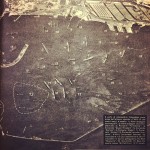 What turned out to be one of the most famous SLC missions in the Second World War has been announced in the Italian War Bulletin N. 585 of the 8th of January 1942: “On the night of the 18th December assault craft of the Italian Royal Navy entered the Harbour of Alexandria and attacked two British battleships anchored there. It has only just been confirmed that a battleship of the Valiant class was seriously damaged and put into dock for repairs, and is still there.”
What turned out to be one of the most famous SLC missions in the Second World War has been announced in the Italian War Bulletin N. 585 of the 8th of January 1942: “On the night of the 18th December assault craft of the Italian Royal Navy entered the Harbour of Alexandria and attacked two British battleships anchored there. It has only just been confirmed that a battleship of the Valiant class was seriously damaged and put into dock for repairs, and is still there.”
Bulletin N. 586 of the 9th of January 1942, added the following: “In the Operation conducted by assault craft fo the Royal Italian Navy in the Harbour of Alexandria and reported in yesterday’s Bulletin we now have definite further intelligence that, in Addition to the Valiant, a second battleship of the Barham class was also damaged.”
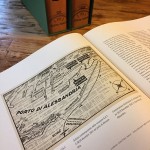 Winston Churchill announced in a speech before a secret session of the House of Commons on the 23rd of April 1942: “A further sinister stroke was to come. On the early morning of December 19 half a dozen Italians in unusual diving suits were captured floundering about in the Harbour of Alexandria… Four hours later explosions occurred in the bottoms of the Valiant and the Queen Elizabeth, produced by limpet bombs fixed with extra-ordinary courage and ingenuity, the effect which was to blow large holes in the bottoms of both ships and to flood several compartments, thus putting them both out of Actions for many months…”
Winston Churchill announced in a speech before a secret session of the House of Commons on the 23rd of April 1942: “A further sinister stroke was to come. On the early morning of December 19 half a dozen Italians in unusual diving suits were captured floundering about in the Harbour of Alexandria… Four hours later explosions occurred in the bottoms of the Valiant and the Queen Elizabeth, produced by limpet bombs fixed with extra-ordinary courage and ingenuity, the effect which was to blow large holes in the bottoms of both ships and to flood several compartments, thus putting them both out of Actions for many months…”
Read chapter II.I of our book “The References” 1930’s-1940’s to find out what happened on 18 December 1941 (page 118-125). More on the historic content in our “The References” book set with a total of 1392 pages can be found here and here. You can purchase “The References” 1930’s-1940’s in our bookstore. Enjoy reading!
Hammer’s Ref. 3646 / Type B is up for auction
by Volker on Nov.25, 2023, under General
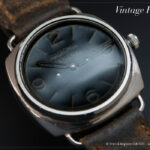 Sotheby’s New York will auction a Ref. 3646 / Type B with riveted plastic dial in their Important Watches sale on 7 December 2023.
Sotheby’s New York will auction a Ref. 3646 / Type B with riveted plastic dial in their Important Watches sale on 7 December 2023.
This 3646 is well known in the paneristi community and has been consigned by our dear friend Hammer along with other watches from his personal collection. You can read more on this rare Ref. 3646 / Type B “Radiomir Panerai” from 1941 here in our watch point.
[Photo courtesy of Martin Wilmsen]
Sotheby’s New York to auction a Ref. 3646 / Type B
by Volker on Nov.25, 2023, under Watch Point
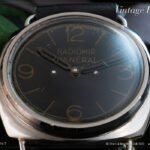 Sotheby’s New York will auction a rare Ref. 3646 / Type B with riveted plastic dial – read more at their website here.
Sotheby’s New York will auction a rare Ref. 3646 / Type B with riveted plastic dial – read more at their website here.
This specimen is one of only 21 Ref. 3646 / Type B watches known in our database until today. It has been recorded in 2013 and still remains the watch with the lowest case number within all known Ref. 3646 / Type B watches, bearing the small Oyster Watch Co hallmark on the inside of the caseback (“full polish” decoration) with its seven-digit casing reference number and the reference number 3646. You can read more on our 3646 caseback classification here.
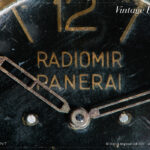 The watch is fitted with a riveted plastic dial, which has a smaller diameter than the sandwich dials, visible by the little gap between dial and (high) bezel. It bears the famous “Radiomir Panerai” writing below 12 o’clock. The surface of the plastic dial has become distorted over time. The luminous material under the surface in the numerals and indices appears lightly raised, while the other areas have become recessed (see also photo here).
The watch is fitted with a riveted plastic dial, which has a smaller diameter than the sandwich dials, visible by the little gap between dial and (high) bezel. It bears the famous “Radiomir Panerai” writing below 12 o’clock. The surface of the plastic dial has become distorted over time. The luminous material under the surface in the numerals and indices appears lightly raised, while the other areas have become recessed (see also photo here).
The watch is fitted with a Rolex crown (Type 13) with “Oyster Patent +” lettering. The steel hands on this watch have become competely skeletonized. The dodecagonal caseback of the watch does not have an outer engraving. The 47 mm steel case has the typical breadth of the curved strap loop, a common feature on watches from the early series (Type A to Type C) visible in the photo below.
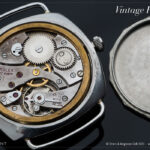 Features of the watch:
Features of the watch:
Reference: 3646 / Type B
Dial: “Radiomir Panerai” (sandwich, riveted plastic dial)
Case number: 1009XXX
Movement: Rolex Cal. 618 / Type 1
We have featured this watch in our book “The References” 1930’s-1940’s in chapter II.II on page 173-189. It was one of several historic Panerai watches Hammer provided to us in 2014 to be featured in our books. We hope our friend’s beloved 3646 will find a good new home and that it remain surfaced in the Vintage Panerai collectors world. [Ralf Ehlers & Volker Wiegmann]
[Photos courtesy of Martin Wilmsen]
“Il cavallo di Troia” – the secret SLC base
by Volker on Nov.23, 2023, under Allgemein
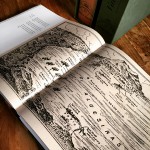 Enemy ships in the harbour of Gibraltar have been in the sight of the Royal Italian Navy since September 1940. After several attacks by “Gamma” frogmen and SLC units, ideas to build a secret base of the Decima MAS were realized in the second half of the year 1942. Convoy ships for the United States were beginning to arrive in quantity. The numbers of potential targets at anchor in the Bay of Algeciras were growing almost daily.
Enemy ships in the harbour of Gibraltar have been in the sight of the Royal Italian Navy since September 1940. After several attacks by “Gamma” frogmen and SLC units, ideas to build a secret base of the Decima MAS were realized in the second half of the year 1942. Convoy ships for the United States were beginning to arrive in quantity. The numbers of potential targets at anchor in the Bay of Algeciras were growing almost daily.
Earlier in 1942, a base for the Decima MAS “Gamma” frogmen was established in the Villa Carmela near La Linea from where several missions were carried out against British merchant ships (see page 126-131 / chapter II.I). During the months of shaping Villa Carmela into an advanced base, the idea for a bigger and much more effective operation had taken form in the mind of Licio Visintini, one of the SLC pilots of the mission B.G.4 in September 1941 (see page 374-381 / chapter II.III) which was carried out from the submarine Scirè.
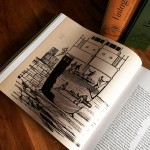 Before the new base was ready for action, each attack at Gibraltar had required a long submarine voyage, air and land transportation of the attack-teams, the shipping of supplies and weapons, arrangements for rendezvous, an approach by submarine, and finally the task of smuggling the survivors back to Italy thru neutral Spanish territory.
Before the new base was ready for action, each attack at Gibraltar had required a long submarine voyage, air and land transportation of the attack-teams, the shipping of supplies and weapons, arrangements for rendezvous, an approach by submarine, and finally the task of smuggling the survivors back to Italy thru neutral Spanish territory.
Licio Visintini’s idea became real with turning the anchored ship Olterra inside the pier of Algeciras into a secret base for SLC missions. Visintini and further technical specialists replaced the original crew of the Olterra. An assembly workshop for the SLC devices (which arrived in sections, declared as spare parts for the damaged ship) was established in the hull. A portside cabin of the Olterra became the observation post with an excellent view of Gibraltar harbour. Finally, a folding door on the port side bow (see coffee table shot of page 386-387 /chapter II.III) became the exit door for the SLC units below waterline to reach their targets – and to return back into the hull of the Olterra. After months of intensive work in total secrecy, the inconspicious ship Olterra was turned into a Trojan Horse – “il cavallo di Troia” – and six men were ready for action with their SLC devices.
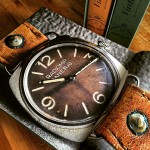 The Olterra was starting point of the following SLC missions against enemy ships in the bay of Algeciras / Gibraltar harbour: B.G.5 (7/8 December 1942), B.G.6 (7/8 May 1943) and B.G.7 (3/4 August 1943). Our book “The References” 1930’s-1940’s features two Ref. 3646 watches which were used during these missions.
The Olterra was starting point of the following SLC missions against enemy ships in the bay of Algeciras / Gibraltar harbour: B.G.5 (7/8 December 1942), B.G.6 (7/8 May 1943) and B.G.7 (3/4 August 1943). Our book “The References” 1930’s-1940’s features two Ref. 3646 watches which were used during these missions.
The Ref. 3646 / Type A “Radiomir Panerai” watch of Ernesto Notari is featured in chapter II.I (page 58-91 / see coffee table shot on the left) – more on this watch and its history can be found here. The Ref. 3646 / Type C “Radiomir Panerai” watch of Licio Visintini is featured in chapter II.III (page 350-367) – more on this watch and the history behind can be found here. The new “The References” books can be ordered only in our bookstore.
Enjoy reading!
[Ralf Ehlers & Volker Wiegmann]
18 November 1944 – today in history…
by Volker on Nov.18, 2023, under Allgemein
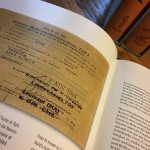 Read chapter VII of our book “History2” to find out what happened on 18 November 1944. Rare documents helped us to capture the history behind a Ref. 3646 / Type D “Kampfschwimmer” watch, which can be found in this chapter.
Read chapter VII of our book “History2” to find out what happened on 18 November 1944. Rare documents helped us to capture the history behind a Ref. 3646 / Type D “Kampfschwimmer” watch, which can be found in this chapter.
Beside photos from the years 1944 and 1945 showing the watch on the frogman’s wrist, as well as his identification papers and travel documents issued in Venice (see photo), helped us to reconstruct the route Hanns-Martin Kaufhold took to the mission grounds in the last months of the Second World War.
Read more about chapter VII of “History2” (70 pages, 58 photos, 6 technical illustrations) here. and here. You can purchase your copy of “History2” in our bookstore.

